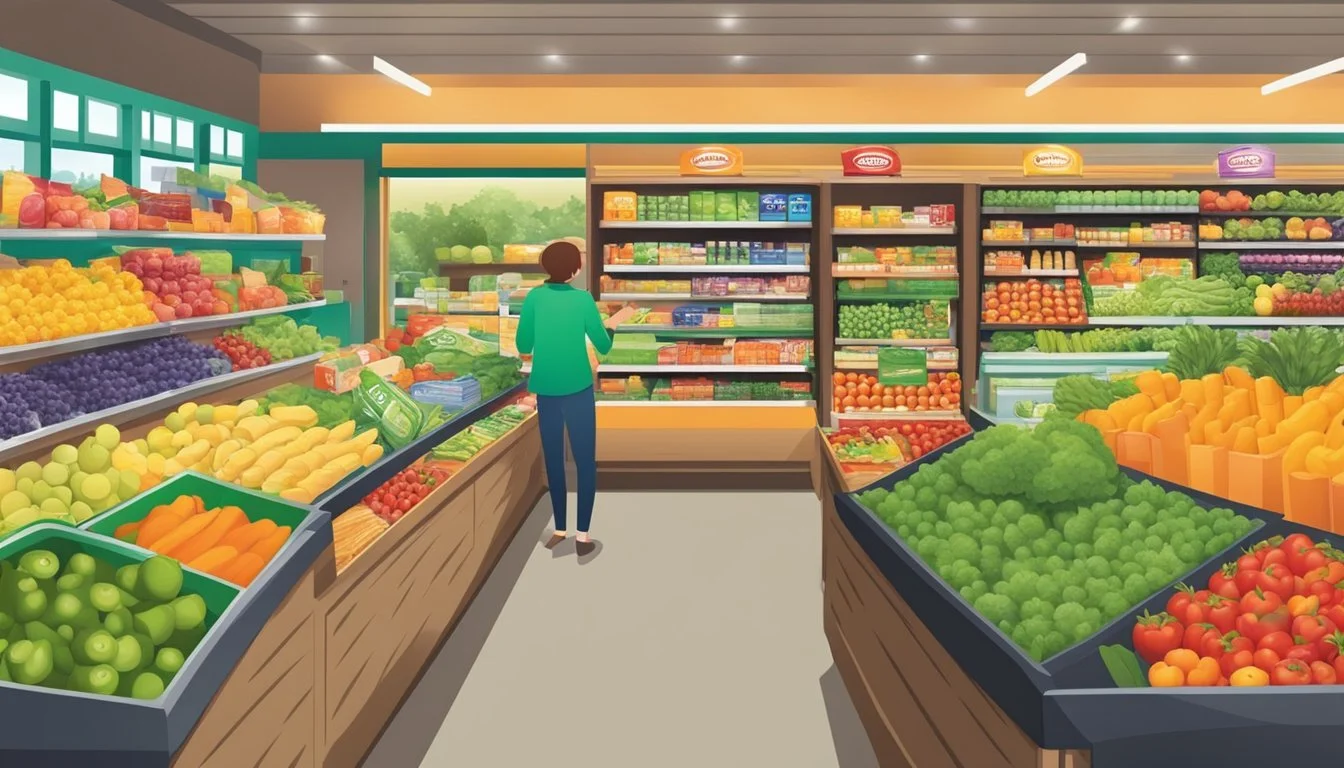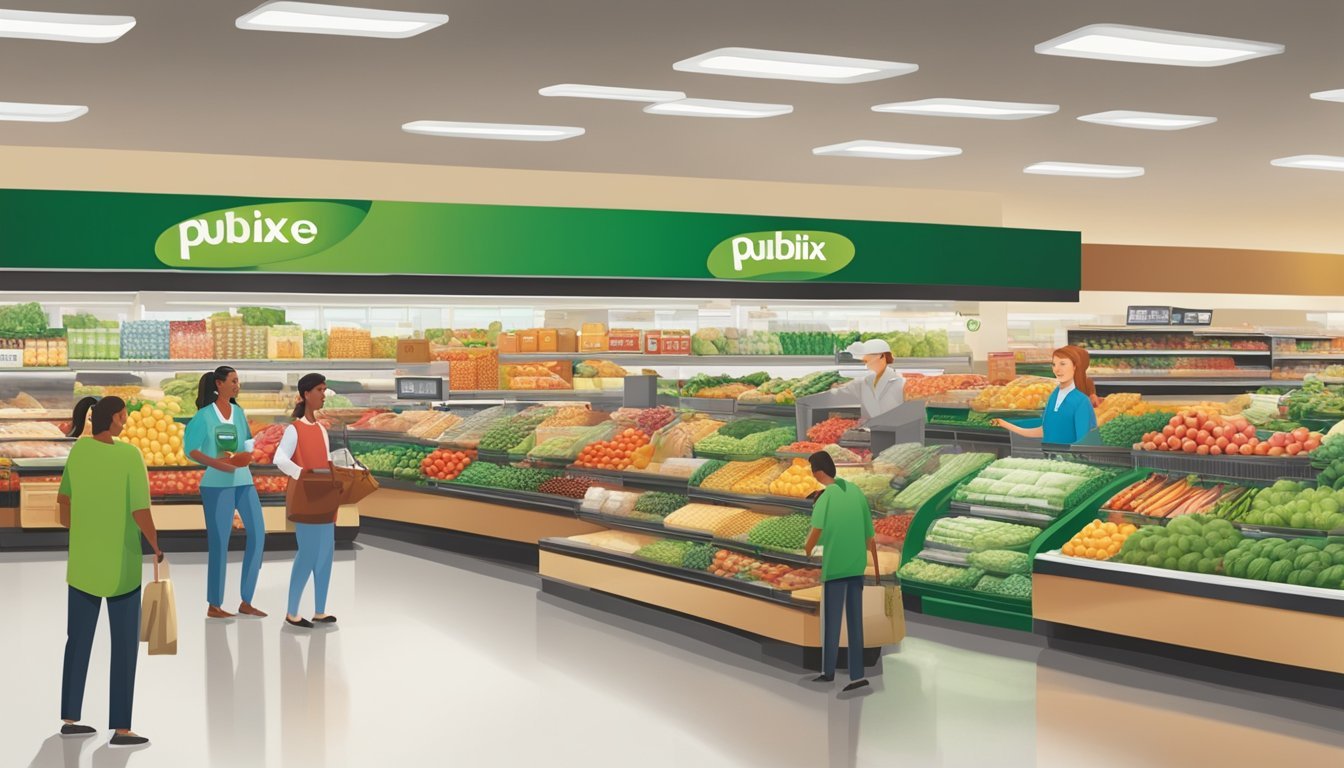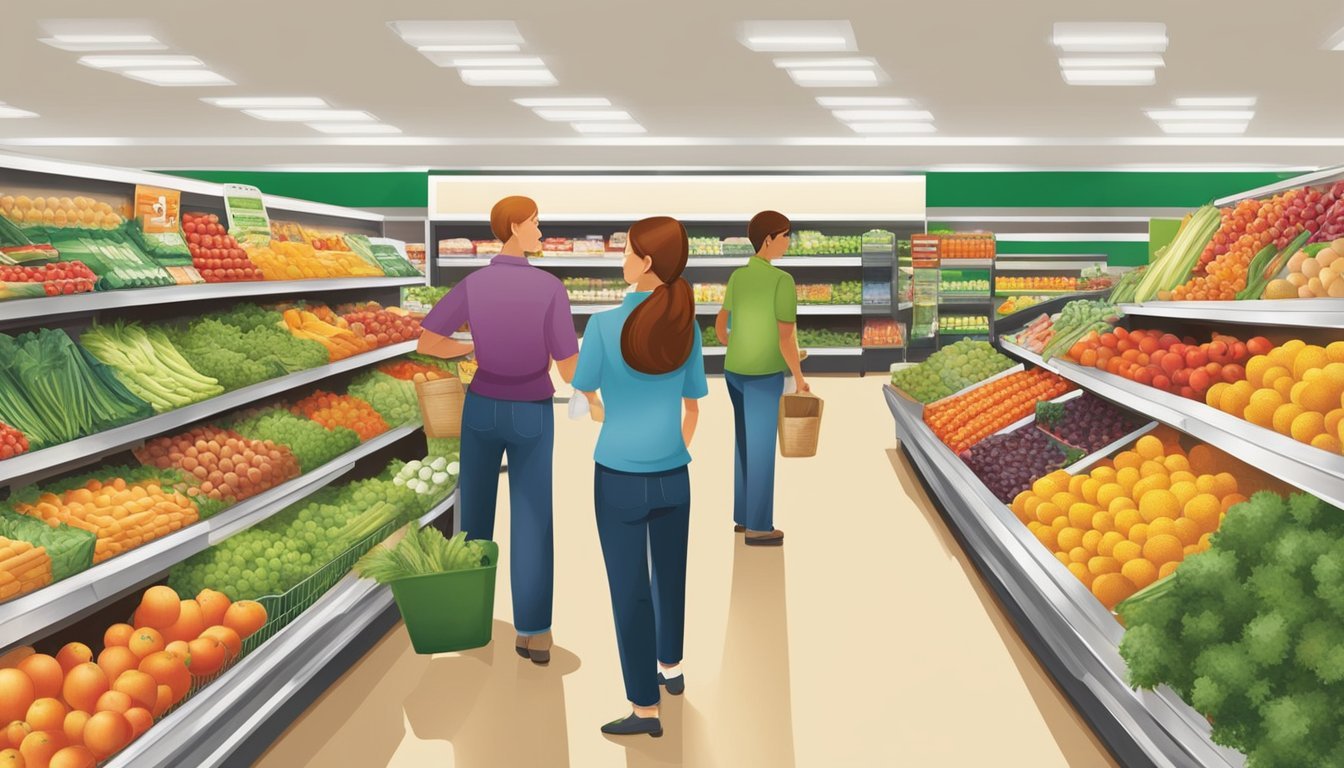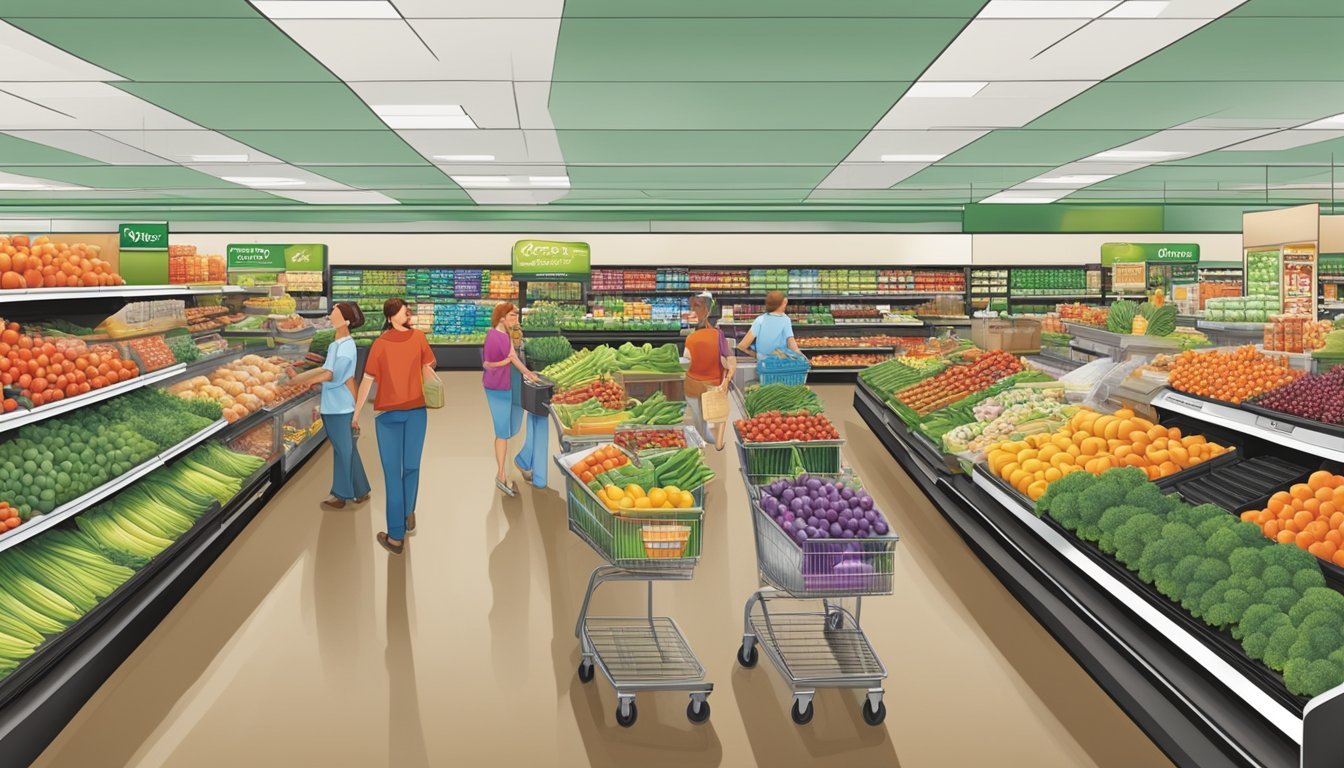Publix vs Hy-Vee
Comparing Shopping Experiences, Prices, and Quality
In the competitive landscape of American grocery chains, Publix and Hy-Vee stand out as prominent players. Publix, a stalwart in the Southeast with over 1,200 locations, is cherished for its customer service, clean stores, and quality products. Originating in Florida, it has expanded its reach to several other states, solidifying its reputation in the industry. Its commitment to community and customer satisfaction has been integral to its growth, garnering a loyal customer base over the years.
Midwestern counterpart Hy-Vee, though smaller in scale with around 300 stores, brings a strong regional presence and a reputation for variety and health-oriented options. Hy-Vee's emphasis on providing consumers with a wide array of grocery items, including dietitian services and health clinics, positions it as more than just a supermarket. It focuses on enhancing the shopping experience with added services that cater to the wellness trends that are increasingly influencing consumer choices.
Both grocery chains have carved out distinctive niches, with strategic approaches to grocery retail that underscore their unique strengths. As they vie for the title of the better grocery store, it is clear that both Publix and Hy-Vee have evolved to meet their customer’s needs, yet in uniquely different ways. The evaluation of which store comes out on top depends on various factors, including product selection, store environment, customer service, and the overall shopping experience.
Grocery Store Evolution
The evolution of grocery stores such as Publix and Hy-Vee reflects a storied history of adaptation and regional expansion. Key factors have been their adherence to local preferences and the steady incorporation of innovations aligned with advancing retail standards.
Historical Progression
Publix, established in 1930 and headquartered in Lakeland, Florida, exemplifies the American success story in grocery retail, evolving from a single store to over 1,300 locations across the United States. The company's expansion is marked by strategic innovations from its inception during the Great Depression to the present day, including a focus on customer service and community engagement.
Hy-Vee, also founded in 1930 in a small Iowa brick building, has grown significantly from its humble beginnings. The company's dedication to customer experience and commitment to quality products has allowed it to adapt over the decades, leading to its current status as a major regional player with hundreds of stores.
Regional Influence
Both Publix and Hy-Vee have a significant regional influence, tailoring their services and product offerings to the preferences of local communities.
Publix—primarily dominant in the Southeastern part of America, has cemented its position through tailored offerings and an understanding of the regional palate. Its stores have become a staple in the communities they serve.
Hy-Vee, on the other hand, started in the Midwest and maintains a strong presence there. The retailer has earned a reputation for quality and service, which resonates with the local consumer base. In South Dakota, for example, Hy-Vee is recognized for its popularity and positive reception.
Both chains' attentiveness to regional tastes and needs has allowed them to establish a loyal customer base, and their growth is indicative of their ability to evolve in America's diverse and ever-changing grocery landscape.
Corporate Overview
In comparing Publix and Hy-Vee, it's essential to examine their business models, leadership, strategies, and market presence to understand their positions in the highly competitive grocery sector.
Publix's Business Model
Publix Super Markets Inc. operates on an employee-owned model, originating from Lakeland, Florida. Each store provides a wide range of products, including grocery, pharmacy, and other service options. As of 2024, with hundreds of locations across the Southeastern United States, Publix emphasizes creating a pleasant shopping experience, which is a cornerstone of its sustained growth.
Hy-Vee's Business Model
Hy-Vee, Inc., based in West Des Moines, Iowa, follows an employee-owned business structure, enabling a distinctive corporate culture. The chain is known for offering beyond mere groceries, such as dry cleaning services and fishing and hunting licenses, indicative of its commitment to diversified customer service.
Leadership and Strategy
Publix's executive leadership, with CEO Todd Jones at the forefront, drives a customer-centric approach that prioritizes satisfaction and community involvement. Meanwhile, Hy-Vee's CEO steers the company with a similar focus on customer service but also invests heavily in expanding service offerings, aiming to provide convenience and one-stop solutions for shoppers.
Expansion and Market Presence
Publix has a dominant presence in the grocery market, particularly in its home state of Florida, and continues to expand methodically into new regions. Conversely, Hy-Vee has established a strong base in the Midwest and is exploring markets further east into Indiana, Kentucky, and Tennessee, challenging existing grocery giants in these areas.
Store Experience
When comparing Publix and Hy-Vee, one notices distinct nuances in their store experiences, evident through elements such as layout, cleanliness, and general maintenance.
Store Layout and Design
Publix stores often maintain a consistent layout across their locations, providing a familiar shopping experience for regular customers. They prioritize navigation ease with well-signed aisles and a logical product sequence. By contrast, Hy-Vee emphasizes a more tailored layout, reflecting the local community's needs. This approach means that while one Hy-Vee store might cater more to a particular demographic, another might have a different focus, such as organic or international foods.
Cleanliness and Maintenance
Customers have noted Publix's dedication to keeping their stores immaculate, with frequent cleaning schedules to maintain a high level of hygiene -- a crucial factor in the grocery store experience. Hy-Vee shares a similar commitment to cleanliness, but their individual store size and varied designs can result in a maintenance experience that may differ slightly from store to store. Both retailers, however, clearly place significant emphasis on ensuring their establishments offer a clean and well-maintained environment.
Product Selection
When evaluating Publix and Hy-Vee, one must consider the range and quality of their offerings across produce, meat and deli, bakery, and store-brand products.
Produce Quality
Publix prides itself on a well-stocked produce section, known for its fresh fruits and vegetables, with an emphasis on quality and seasonal availability. Hy-Vee similarly offers a variety of produce, with additional focus on organic options, inviting customers to shop for both everyday and specialty items.
Meat and Deli Offerings
The meat selection at Publix often includes both standard and premium cuts, with an assortment of prepared meats ready for cooking. Their deli counters feature a variety of meats, cheeses, and made-to-order sandwiches. Hy-Vee distinguishes itself with a robust meat department, offering a range of quality cuts and in-store butcher services, alongside a deli section known for its diverse array of products.
Bakery and Fresh Foods
Publix has gained customer appreciation for its bakery, which offers an array of breads, cakes, and pastries, all baked fresh daily. Hy-Vee competes with a bakery section that provides fresh and artisanal bread choices, as well as a commendable selection of desserts and pastries.
Grocery Store Brands
Publix customers often find value in the SE Grocers store brand, recognized for maintaining taste and quality comparable to national brands. Hy-Vee brings to the table its own store brand, asserting a similar commitment to quality and customer satisfaction across a wide array of grocery items.
Pricing Strategies
Evaluating the pricing strategies of Publix and Hy-Vee provides insights into their approach to remain competitive and attract different segments of customers.
Everyday Prices
Publix is known for its competitive pricing on a wide range of products. Its strategy focuses on offering value to customers through a balance of price and service. Hy-Vee similarly ensures that its everyday prices are in line with market expectations. Both stores aim to offer affordable options but may carry a premium on select items due to their emphasis on service and quality.
Discounts and Promotions
Both Publix and Hy-Vee regularly introduce discounts and promotions to incentivize shopping. Publix offers weekly specials and a loyalty program that affords exclusive deals to its members. Hy-Vee similarly provides weekly ads with discounted items and has a fuel saver program, where customers can earn discounts on fuel based on their grocery purchases.
Comparison with Other Retailers
Compared to industry giants like Walmart and Aldi, known for their aggressively low prices, Publix and Hy-Vee maintain a balance between cost and quality service, often resulting in slightly higher prices. Kroger competes closely with Publix in many markets, with both retailers frequently adjusting prices for competitive advantage. On the higher end, Whole Foods offers premium products at correspondingly higher prices, while clubs like Costco emphasize bulk purchasing at reduced costs. Publix and Hy-Vee position themselves comfortably among these varied pricing strategies, targeting customers who value a blend of price, quality, and experience.
Consumer Experience
When comparing Publix and Hy-Vee, their approaches to customer service and online offerings are pivotal factors in evaluating the consumer experience they provide.
Customer Service Excellence
At Publix, the customer service often garners high praise. Shoppers frequently cite the staff's friendliness and the store's cleanliness, contributing to a pleasant shopping ambiance. Trust is a cornerstone of Publix's philosophy, and they have a reputation for going above and beyond for their customers, such as carrying groceries to their cars.
Hy-Vee, on the other hand, also places a significant emphasis on customer service with a friendly Midwestern touch that consumers appreciate. Staff at Hy-Vee are known for their willingness to assist and provide a personal touch, often leading to high customer satisfaction. Both retailers have utilized customer service as a core strategy, understanding that it enhances the overall grocery shopping convenience and experience.
Online Shopping and Home Delivery
Publix has an online presence that allows for grocery shopping from the comfort of one's home. They provide a seamless interface for online orders, coupled with efficient home delivery services, which speak volumes about their dedication to convenience.
Hy-Vee also offers comprehensive online services, which have expanded to include a user-friendly mobile app and website. Their home delivery and curbside pickup options respond to the growing demand for online grocery shopping solutions. This indicates that both stores recognize the importance of adapting to modern consumer needs, ensuring a convenient shopping experience extends beyond the physical store.
Both Publix and Hy-Vee have invested heavily in their online platforms, realizing that digital convenience is integral to contemporary grocery shopping. They offer a range of delivery times and subscription options to suit various needs, emphasizing their commitment to adaptability and customer service.
Brand Reputation
When evaluating Publix and Hy-Vee, their brand reputations emerge from public perception, the quality and value of their products and services, and the loyalty and trust they command among consumers.
Public Perception
Publix is often perceived favorably in the southeastern United States, with a reputation for clean stores and a positive shopping environment. Hy-Vee is respected in the Midwest for its employee ownership model, suggesting a vested interest in customer service and store management.
Quality and Value
Publix:
Quality: Known for high-standard produce and meats.
Value: While sometimes priced higher than discount chains, Publix is recognized for offering quality that justifies the cost.
Hy-Vee:
Quality: Offers a range of quality products, from affordable brands to specialty items.
Value: Competitive pricing with frequent promotions adds to its value proposition.
Customer Loyalty and Trust
A Newsweek survey highlighted that both brands have strong trust ratings among Americans.
Publix boasts a loyal customer base due to its regional dominance and high service standards.
Hy-Vee maintains customer trust through community involvement and its employee-owned structure, which often leads to higher engagement and satisfaction.
Community Impact
Both Publix and Hy-Vee significantly influence their respective regions with initiatives that range from economic contributions to sustainability efforts. They strive to provide value to the states they operate in by supporting local economies and embracing environmentally friendly practices.
Economic Contribution
Publix, with its strong presence in the American Southeast, operates over 1,300 stores and has a substantial economic impact in the states where it functions. It not only employs a large number of residents, providing substantial job opportunities, but also supports local producers by selling regional products, including organic options, in its stores.
Hy-Vee, primarily located in the Midwest, engages with the local economies of states like Iowa where it’s headquartered. With more than 250 stores, Hy-Vee's role as an employee-owned company enriches its communities by keeping profits within local contexts, and by similarly promoting and selling products from local growers, it sustains the state economies.
Sustainability Initiatives
Publix asserts its dedication to sustainability through various practices. It maintains a focus on reducing its carbon footprint by implementing energy-efficient systems in stores and uses sustainable sourcing for its products, including a range of organic items that meet environmental standards.
Hy-Vee demonstrates a commitment to environmental initiatives in America's heartland by prioritizing waste reduction and sustainable sourcing methods. It has established programs to encourage customers to recycle and participates in responsibly sourced seafood campaigns, which reduce the ecological impact of its stores and encourage consumers to make sustainable choices.
Conclusion
When comparing Publix and Hy-Vee, each grocery chain has its distinct advantages. Hy-Vee, serving a limited eight-state region, focuses on offering discounts and competitive pricing, particularly with their store-brand products like sliced cheeses and sour cream. On the other hand, Publix, which is expanding into new territories like Kentucky, is known for its strong regional presence in the southeast and dedication to customer service.
Advantages of Hy-Vee:
Often provides deep discounts on store-brand items
Maintains a loyal regional customer base
Advantages of Publix:
Renowned for exceptional customer service
Expanding its reach, showing growth and adaptability
Customers' preferences may vary based on location, shopping priorities, and brand loyalty.
For discount seekers in the Midwest, Hy-Vee may be the preferred choice.
Shoppers who prioritize customer service and a pleasant shopping environment might lean towards Publix.
Each supermarket shines in its unique way; thus, the decision of which is better can be quite subjective and dependent on individual needs and preferences.







